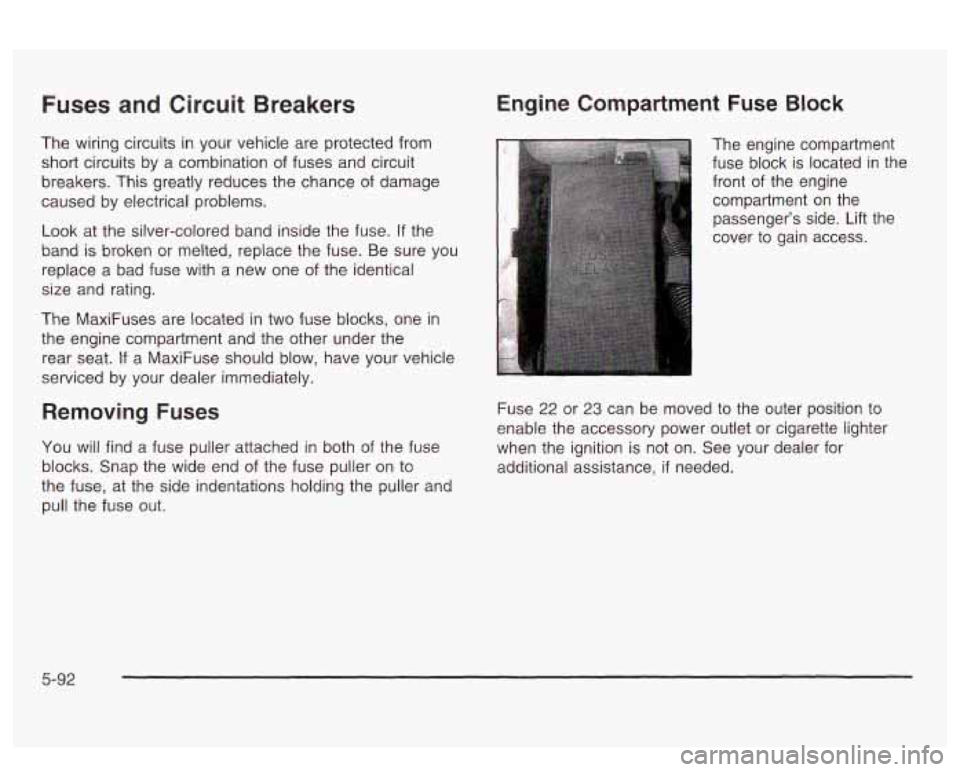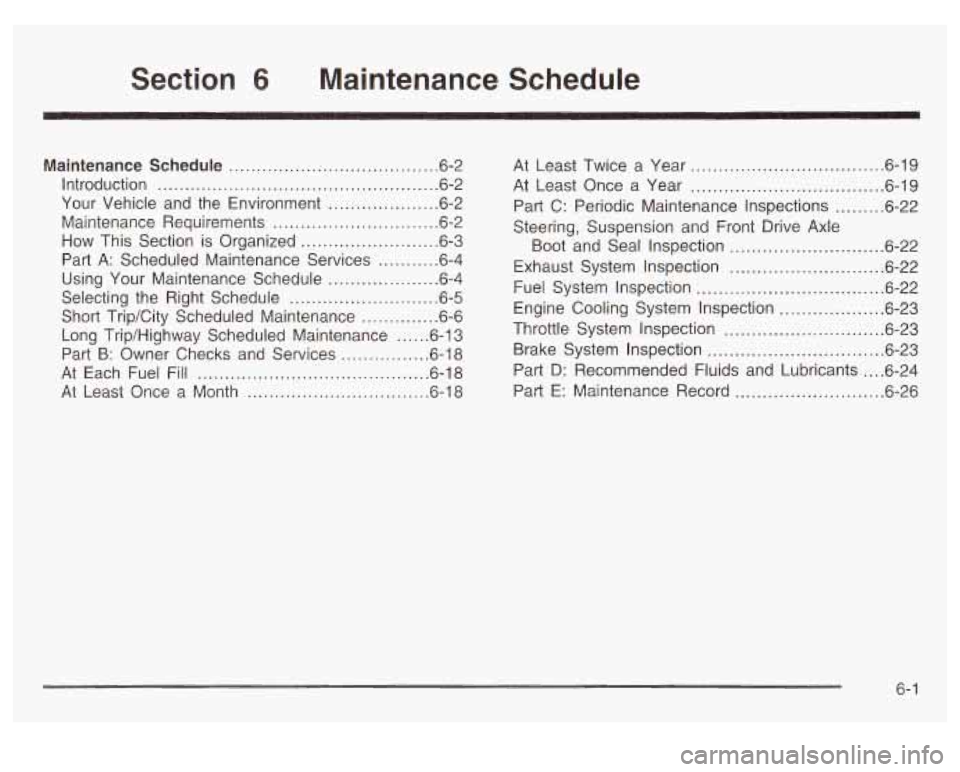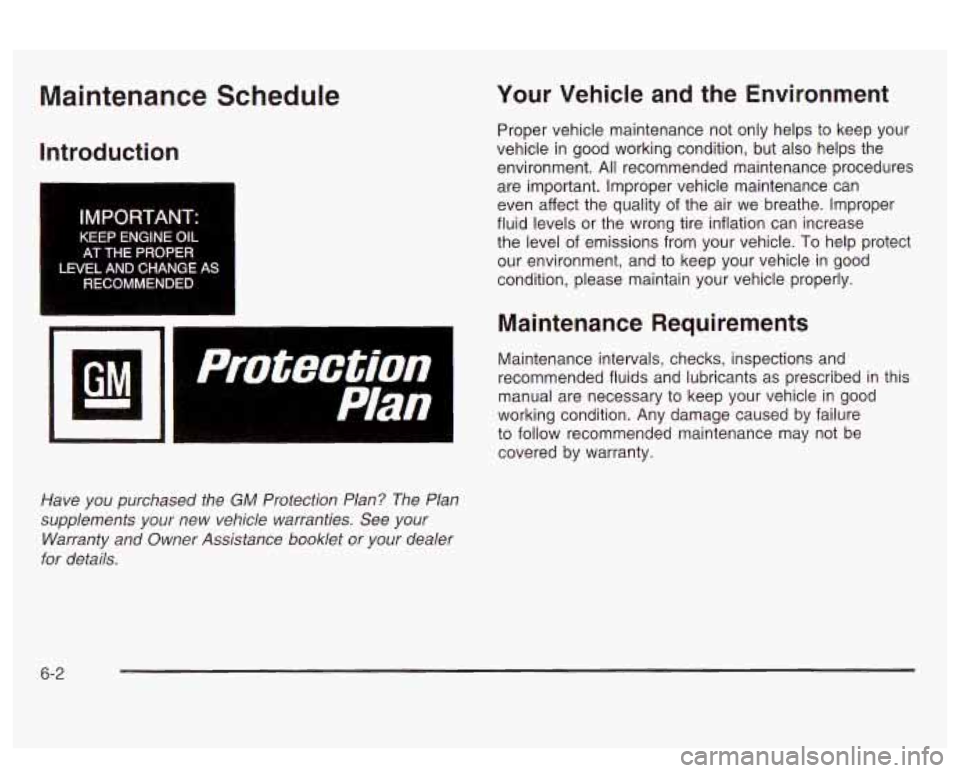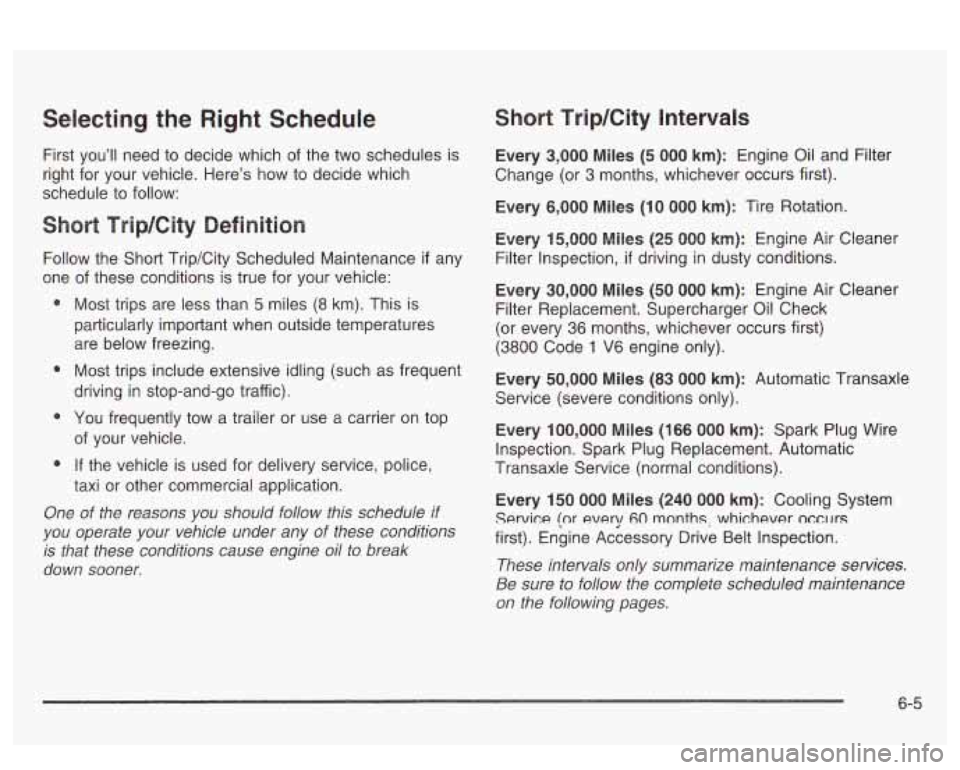Page 310 of 418
Notice: Damage to your vehicle may result from
electrical shorting
if jumper cables are removed
incorrectly. To prevent electrical shorting, take care
that the cables don’t touch each other or any
other metal. The repairs wouldn’t be covered by
your warranty.
A. Dead Battery or Remote Positive (+) Terminal
B. Good Battery or Remote Positive
(+) or Remote
Negative
(-) Terminals
Negative
(-) Terminal
c. Hexby, Unpainted Meta! Engine Part e!- !?em&?
To disconnect the jumper cables from both vehicles, do
the following:
1. Disconnect the black negative (-) cable from the
2. Disconnect the black negative (-) cable from the
3. Disconnect the red positive (+) cable from the
4. Disconnect the red positive (+) cable from the other
5. Return the positive (+) remote terminal cover to its
vehicle that had the dead
battery.
vehicle with the good battery.
vehicle with the good battery.
vehicle.
original position.
5-5 1
Page 332 of 418
Changing a Flat Tire
If a tire goes flat, avoid further tire and wheel damage
by driving slowly to a level place. Turn
on your
hazar
' varning flasl s.
Changing L he can cause an y. ... 2
vehicle can slip off the jack and roll over you
or other people. You and they could be badly
injured. Find a level place to change your tire.
To help prevent the vehicle from moving:
1. Set the parking brake firmly.
2. Put the shift lever in PARK (P).
3. Turn off the engine.
To be even more certain the vehicle won't
move: you can put blocks at the front and
rear
of the tire farthest away from the one
being changed. That would be the tire on
the other
side of the vehicle, at the
opposite end.
-
The following steps will tell you how to use the jack and
change a tire.
5-73
Page 349 of 418
Vehicle Identification
Vehicle Identification Number (VIN)
SAMPLE4UXl M072675 1
This is the legal identifier for your vehicle. It appears on
a plate in the front corner of the instrument panel, on
the driver’s side. You can see it
if you look through the
windshield from outside your vehicle. The VIN also
appears on the Vehicle Certification
and Service Parts
labels and the certificates of title and registration.
Engine Identification
The 8th character in your VIN is the engine code.
This code will help you identify your engine,
specifications and replacement parts.
Service Parts Identification Label
You’ll find this label on your spare tire cover. It’s very
helpful if you ever need to order parts. On this label is:
your VIN,
the model designation,
paint information and
a list of all production options and special
equipment.
Be sure that this label
is not removed from the vehicle.
5-90
Page 351 of 418

Fuses and Circuit Breakers
The wiring circuits in your vehicle are protected from
short circuits by a combination of fuses and circuit
breakers. This greatly reduces the chance of damage
caused by electrical problems.
Look at the silver-colored band inside the fuse.
If the
band is broken or melted, replace the fuse. Be sure you
replace a bad fuse with a new one of the identical
size and rating.
The MaxiFuses are located in
two fuse blocks, one in
the engine compartment and the other under the
rear seat. If a MaxiFuse should blow, have your vehicle
serviced by your dealer immediately.
Removing Fuses
You will find a fuse puller attached in both of the fuse
blocks. Snap the wide end of the fuse puller on
to
the fuse, at the side indentations holding the puller and
pull the fuse
out.
Engine Compartment Fuse Block
The engine compartment
fuse block is located in the
front
of the engine
compartment on the
passenger’s side. Lift the
cover
to gain access.
Fuse
22 or 23 can be moved to the outer position to
enable the accessory power outlet or cigarette lighter
when the ignition is not on. See your dealer for
additional assistance,
if needed.
5-92
Page 359 of 418
Capacities and Specifications
The following approximate capacities are given in English and metric conversions. Please refer to
Part D: Recommended Fluids and Lubricants on page 6-24 for more information.
Capacities
Capacities
Application English Metric
Automatic Transaxle
7.4 quarts 7.0 L
Engine Cooling System
10.0 quarts 9.5 L
Engine Oil with Filter
4.5 quarts 4.3 L -
Fuel Tank 18.5 gallons 70.0 L
Wheel Nut Torque 1 00 Ib-ft 140 Nam
Air Conditioning Refrigerant R134a 2.2 Ibs. 1 .O kg
All capacities are approximate. When adding, be sure to fill to the appropriate level, as recommended in this
manual. Recheck fluid level after filling.
Engine Specifications
5-1 00
Page 362 of 418

6 Maintenance Schedule
Maintenance Schedule ...................................... 6.2
Introduction
................................................... 6.2
Your Vehicle and the Environment
.................... 6-2
Maintenance Requirements
.......................... 6.2
How This Section is Organized
..................... 6-3
Selecting the Right Schedule
........................... 6-5
Part
A: Scheduled Maintenance Services
........... 6.4
Using Your Maintenance Schedule
.................... 6-4
Short Trip/City Scheduled Maintenance
.............. 6-6
Long Trip/Highway Scheduled Maintenance
...... 6-13
Part
B: Owner Checks and Services ................ 6-18
At Each Fuel Fill
.......................................... 6-18
At Least Once a Month 0- IO P 40 .................................
At Least Twice a Year ................................... 6.19
At Least Once a Year
................................... 6.19
Part C: Periodic Maintenance Inspections
......... 6.22
Steering, Suspension and Front Drive Axle
Boot and Seal Inspection
............................ 6-22
Exhaust System Inspection
........................... -6-22
Fuel System Inspection
.................................. 6-22
Engine Cooling System Inspection
................... 6-23
Throttle System Inspection
............................. 6-23
Brake System Inspection
................................ 6-23
Part
D: Recommended Fluids and Lubricants .... 6-24
Part
E: Maintenance Record ........................... 6-26
6- 1
Page 363 of 418

Maintenance Schedule
Introduction
IMPORTANT:
XEEP ENGINE OIL
AT THE PROPER
LEVEL AND CHANGE AS
RECOMMENDED
I
a
protection
Plan
Have you purchased the GM Protection Plan? The Plan
supplements your new vehicle warranties.
See your
Warranty and Owner Assistance booklet or your dealer
for details.
Your Vehicle and the Environment
Proper vehicle maintenance not only helps to keep your
vehicle in good working condition, but also helps the
environment.
All recommended maintenance procedures
are important. Improper vehicle maintenance can
even affect the quality of the air we breathe. Improper
fluid levels or the wrong tire inflation can increase
the level of emissions from your vehicle.
To help protect
our environment, and to keep your vehicle in good
condition, please maintain your vehicle properly.
Maintenance Requirements
Maintenance intervals, checks, inspections and
recommended fluids and lubricants as prescribed in this
manual are necessary to keep your vehicle in good
working condition. Any damage caused by failure
to follow recommended maintenance may not be
covered by warranty.
6-2
Page 366 of 418

Selecting the Right Schedule
First you’ll need to decide which of the two schedules is
right for your vehicle. Here’s how to decide which
schedule to follow:
Follow the Short Trip/City Scheduled Maintenance
if any
one of these conditions is true for your vehicle:
0 Most trips are less than 5 miles (8 km). This is
particularly important when outside temperatures
are below freezing.
0 Most trips include extensive idling (such as frequent
0 You frequently tow a trailer or use a carrier on top
driving in
stop-and-go traffic).
of your vehicle.
0 If the vehicle is used for delivery service, police,
One of the reasons you should follow this schedule if
you operate your vehicle under any of these conditions
is that these conditions cause engine oil to break
down sooner.
taxi or other commercial application.
Short TriplCity Intervals
Every 3,000 Miles (5 000 km): Engine Oil and Filter
Change (or
3 months, whichever occurs first).
Every 6,000 Miles (IO 000 km): Tire Rotation.
Every 15,000 Miles (25 000 km): Engine Air Cleaner
Filter Inspection,
if driving in dusty conditions.
Every 30,000 Miles (50 000 km): Engine Air Cleaner
Filter Replacement. Supercharger Oil Check
(or every
36 months, whichever occurs first)
(3800 Code 1 V6 engine only).
Every 50,000 Miles (83 000 km): Automatic Transaxle
Service (severe conditions only).
Every 100,000 Miles (166 000 km): Spark Plug Wire
Inspection. Spark Plug Replacement. Automatic
Transaxle Service (normal conditions).
Every 150 000 Miles (240 000 km): Cooling System
Service [nr every 60 months, whichever nccIJrs
first). Engine Accessory Drive Belt Inspection.
These intervals only summarize maintenance services.
Be sure to follow the complete scheduled maintenance
on the following pages.
6-5